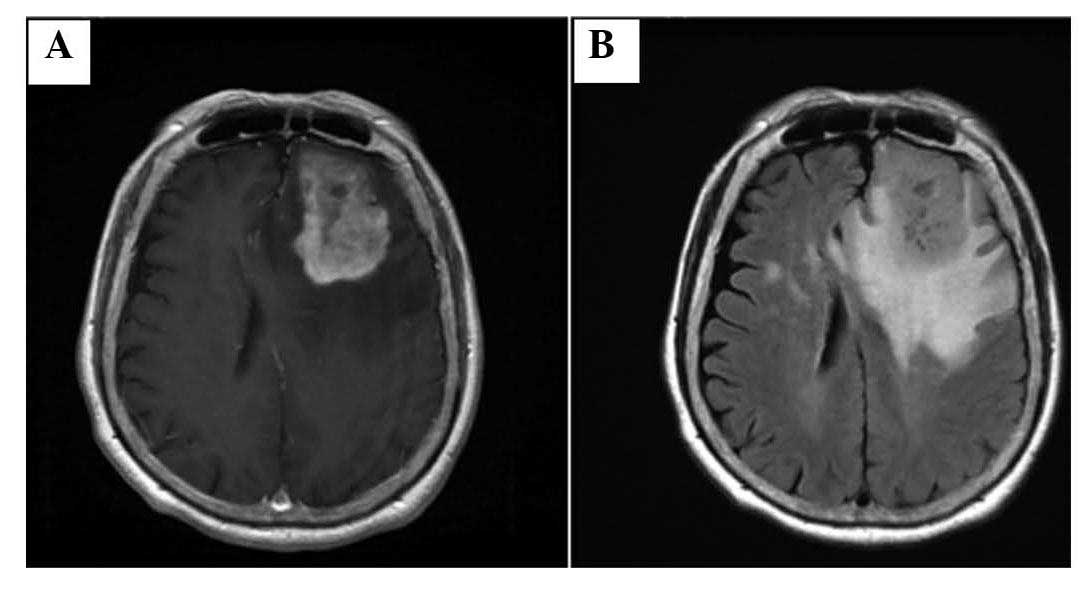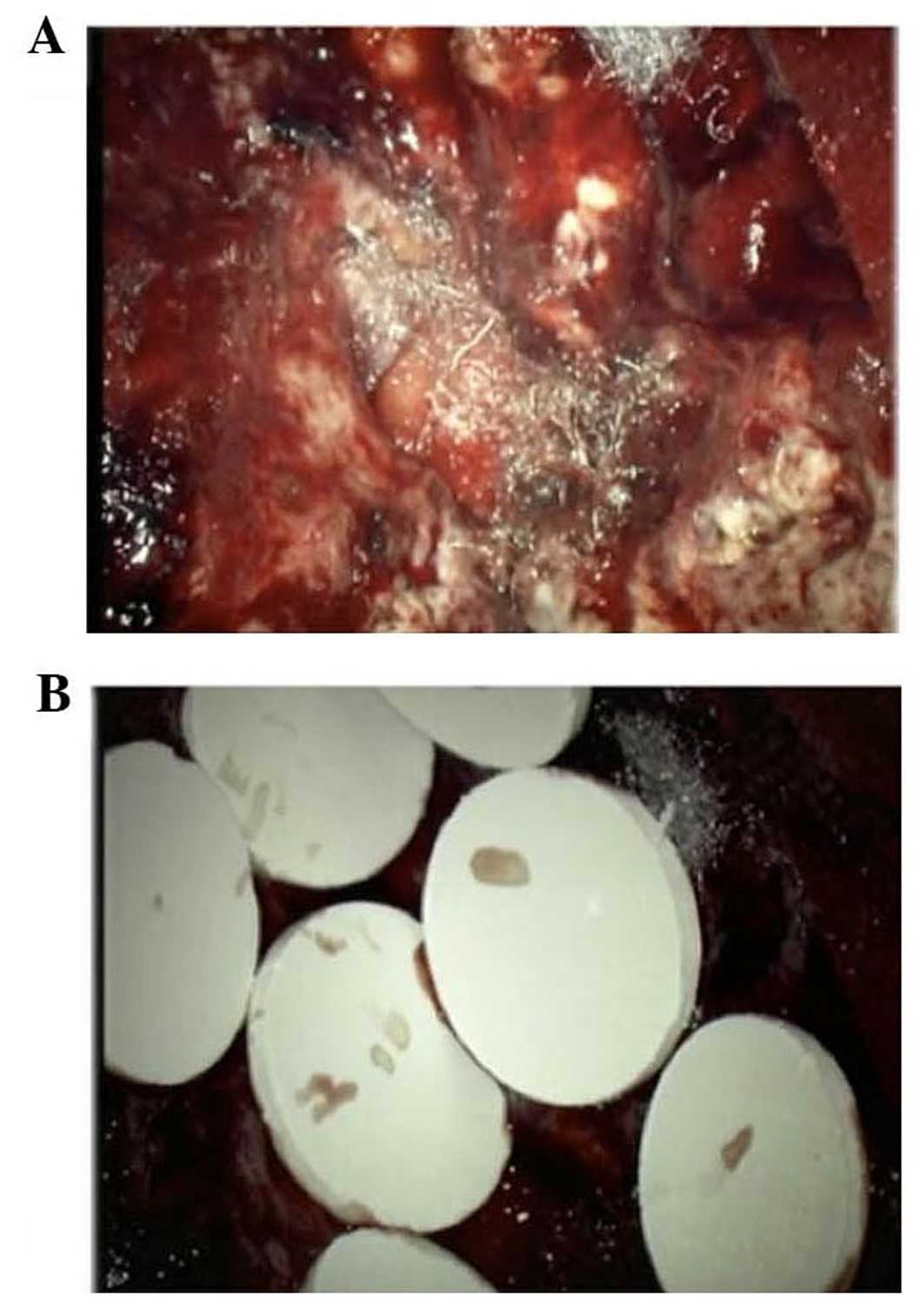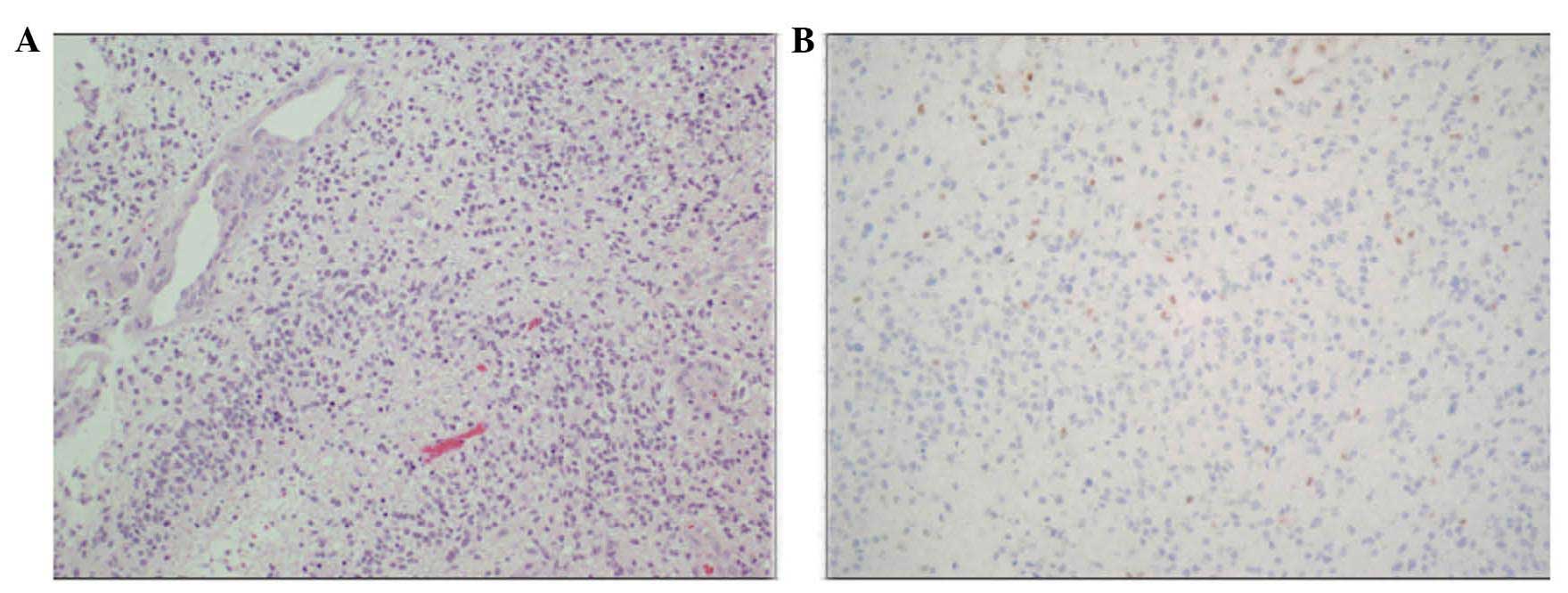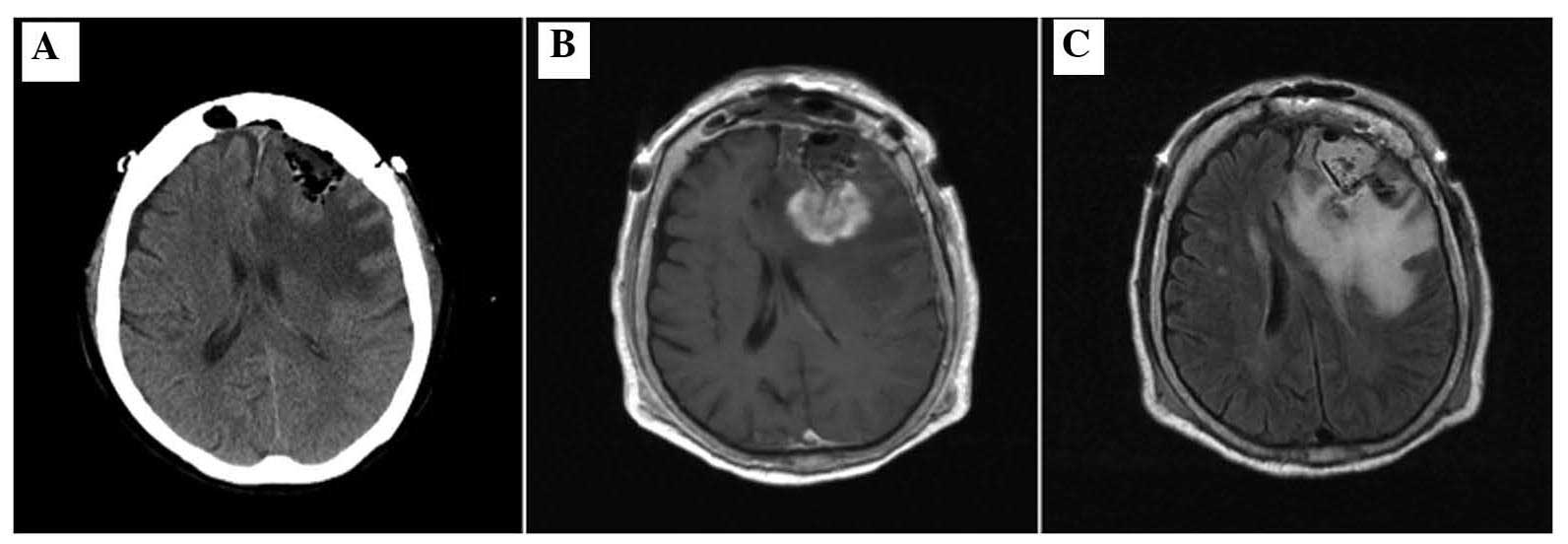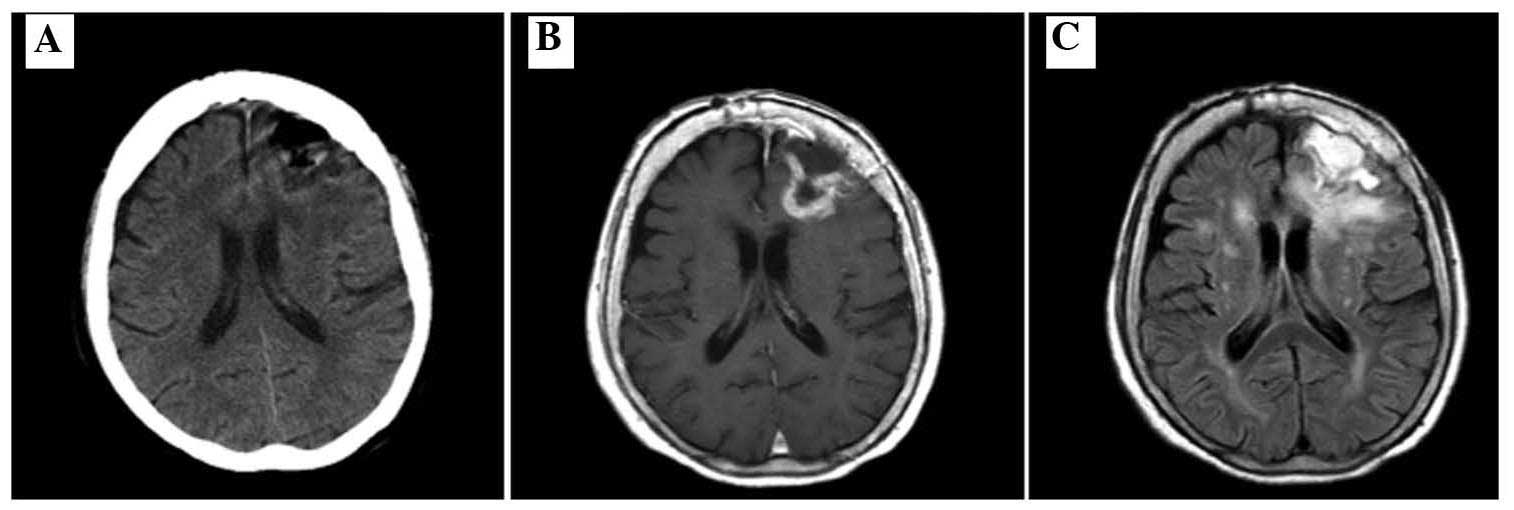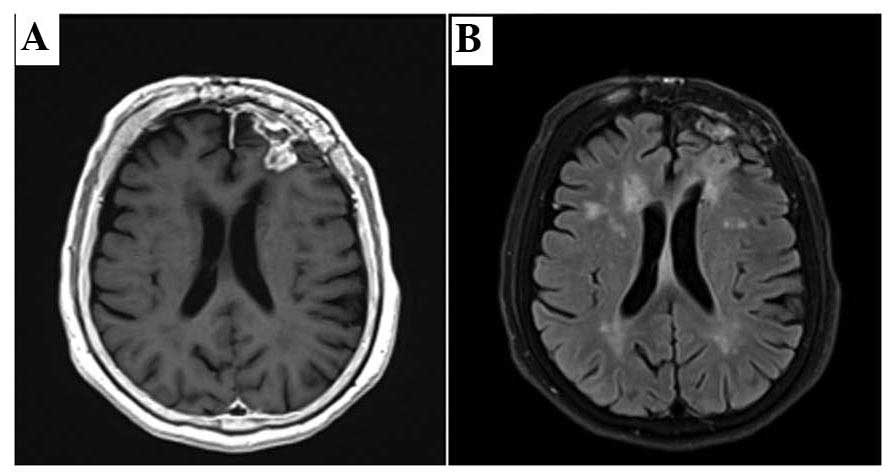|
1
|
Broniscer A, Tatevossian RG, Sabin ND, et
al: Clinical, radiological, histological, and molecular
characteristics of paediatric epithelioid glioblastoma. Neuropathol
Appl Neurobiol. 40:327–336. 2014. View Article : Google Scholar : PubMed/NCBI
|
|
2
|
Aoki T, Nishikawa R, Sugiyama K, Nonoguchi
N, Kawabata N, Mishima K, Adachi J, Kurisu K, Yamasaki F, Tominaga
T, et al: A multicenter phase I/II study of the BCNU implant
(Gliadel® Wafer) for Japanese patients with malignant
gliomas. Neurol Med Chir (Tokyo). 54:290–301. 2014. View Article : Google Scholar : PubMed/NCBI
|
|
3
|
Westphal M, Hilt DC, Bortey E, Delavault
P, Olivares R, Warnke PC, Whittle IR, Jääskeläinen J and Ram Z: A
phase 3 trial of local chemotherapy with biodegradable carmustine
(BCNU) wafers (Gliadel wafers) in patients with primary malignant
glioma. Neurol Oncol. 5:79–88. 2003. View Article : Google Scholar
|
|
4
|
Ulmer S, Spalek K, Nabavi A, Schultka S,
Mehdorn HM, Kesari S and Dörner L: Temporal changes in magnetic
resonance imaging characteristics of Gliadel wafers and of the
adjacent brain parenchyma. Neuro Oncol. 14:482–490. 2012.
View Article : Google Scholar : PubMed/NCBI
|
|
5
|
Colen RR, Zinn PO, Hazany S, Do-Dai D, Wu
JK, Yao K and Zhu JJ: Magnetic resonance imaging appearance and
changes on intracavitary Gliadel wafer placement: A pilot study.
World J Radiol. 3:266–272. 2011. View Article : Google Scholar : PubMed/NCBI
|
|
6
|
Hammoud DA, Belden CJ, Ho AC, Dal Pan GJ,
Herskovits EH, Hilt DC, Brem H and Pomper MG: The surgical bed
after BCNU polymer wafer placement for recurrent glioma: Serial
assessment on CT and MR imaging. AJR Am J Roentgenol.
180:1469–1475. 2003. View Article : Google Scholar : PubMed/NCBI
|
|
7
|
Prager JM, Grenier Y, Cozzens JW,
Chiowanich P, Gorey MT and Meyer JR: Serial CT and MR imaging of
carmustine wafers. AJNR Am J Neuroradiol. 21:119–123.
2000.PubMed/NCBI
|
|
8
|
Sanai N and Berger MS: Glioma extent of
resection and its impact on patient outcome. Neurosurgery.
62:753–764; discussion 264–266. 2008. View Article : Google Scholar : PubMed/NCBI
|
|
9
|
Fukai J, Koizumi F and Nakao N: Enhanced
anti-tumor effect of zoledronic acid combined with temozolomide
against human malignant glioma cell expressing O6-methylguanine DNA
methyltransferase. PLoS One. 9:e1045382014. View Article : Google Scholar : PubMed/NCBI
|
|
10
|
Lechapt-Zalcman E, Levallet G, Dugué AE,
et al: O(6)-methylguanine-DNA methyltransferase (MGMT) promoter
methylation and low MGMT-encoded protein expression as prognostic
markers in glioblastoma patients treated with biodegradable
carmustine wafer implants after initial surgery followed by
radiotherapy with concomitant and adjuvant temozolomide. Cancer.
118:4545–4554. 2012. View Article : Google Scholar : PubMed/NCBI
|
|
11
|
Esteller M, Garcia-Foncillas J, Andion E,
et al: Inactivation of the DNA-repair gene MGMT and the clinical
response of gliomas to alkylating agents. N Engl J Med.
343:1350–1354. 2000. View Article : Google Scholar : PubMed/NCBI
|
|
12
|
Fung LK, Ewend MG, Sills A, Sipos EP,
Thompson R, Watts M, Colvin OM, Brem H and Saltzman WM:
Pharmacokinetics of interstitial delivery of carmustine,
4-hydroperoxycyclophosphamide, and paclitaxel from a biodegradable
polymer implant in the monkey brain. Cancer Res. 58:672–684.
1998.PubMed/NCBI
|
|
13
|
Fleming AB and Saltzman WM:
Pharmacokinetics of the carmustine implant. Clin Pharmacokinet.
41:403–419. 2002. View Article : Google Scholar : PubMed/NCBI
|
|
14
|
Stummer W, van den Bent MJ and Westphal M:
Cytoreductive surgery of glioblastoma as the key to successful
adjuvant therapies: New arguments in an old discussion. Acta
Neurochir (Vienna). 153:1211–1218. 2011. View Article : Google Scholar
|
|
15
|
Gutenberg A, Lumenta CB, Braunsdorf WE,
Sabel M, Mehdorn HM, Westphal M and Giese A: The combination of
carmustine wafers and temozolomide for the treatment of malignant
gliomas. A comprehensive review of the rationale and clinical
experience. J Neurooncol. 113:163–174. 2013. View Article : Google Scholar : PubMed/NCBI
|
|
16
|
Jordan JT, Gerstner ER, Batchelor TT,
Cahill DP and Plotkin SR: Glioblastoma care in the elderly. Cancer.
122:189–197. 2016. View Article : Google Scholar : PubMed/NCBI
|
|
17
|
Malmström A, Grønberg BH, Marosi C, et al:
Temozolomide versus standard 6-week radiotherapy versus
hypofractionated radiotherapy in patients older than 60 years with
glioblastoma: The Nordic randomised, phase 3 trial. Lancet Oncol.
13:916–926. 2012. View Article : Google Scholar : PubMed/NCBI
|
|
18
|
Wick W, Platten M, Meisner C, et al:
Temozolomide chemotherapy alone versus radiotherapy alone for
malignant astrocytoma in the elderly: The NOA-08 randomised, phase
3 trial. Lancet Oncol. 13:707–715. 2012. View Article : Google Scholar : PubMed/NCBI
|



